IMPERFECT CLARITY GRADES
THE IMPERFECT CLARITY GRADES (I1, I2 & I3)
Ok... so we've gone from imperfections that are impossible to locate under 10x (Fl & IF), to minute
imperfections under 10x (VVS1 & VVS2), to minor (VS1 & VS2) to noticeable under 10x (SI1 & SI2).
Now we finally hit the grades where those imperfections become obvious under 10x magnification. What that
means is you will likely find these imperfections without the aid of magnification and if your future mother
in law still has good vision will FAIL that test.
Diamonds of the Imperfect clarity grades are generally found in earrings, pendants and the smaller diamonds
you find on the sides of engagement rings, wedding bands or diamond cluster rings. They are what's
considered the "commercial grade" in our industry and are of course the most common.
Something needs to be said for the I1 grade though which distinguishes them from the I2 and I3 grades that you
should take note of.
I1 clarity diamonds, while generally having an eye visible inclusion will not generally have inclusions so
large that they will diminish brilliance or transparency. So in essence a beautifully cut I1 clarity will
still be as bright and fiery as a VS1+/- clarity it will have that inclusion that can be seen with the human
eye upon inspection.
As you saw in the SI2 grades inclusions can be all condensed in one area or scattered about. Here are some excellent examples to familiarize you with the I1 clarity grade. In this first example we have one solid feather in the 12:00 position and in which you can make out a reflection of this feather in the 5:00 position on the pavilion facet. Yes ... this is what is meant by obvious.
This next I1 is a great example of the inclusions being scattered. Sometimes in I1's like this the inclusions can be more difficult to see with the human eye than the example above.
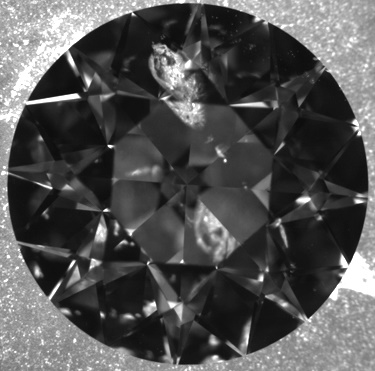
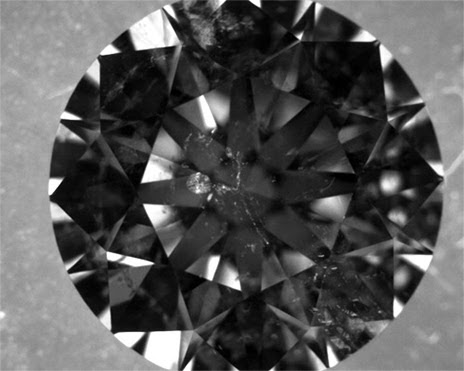
Another good example of I1 clarity. Do I really need to point them out?
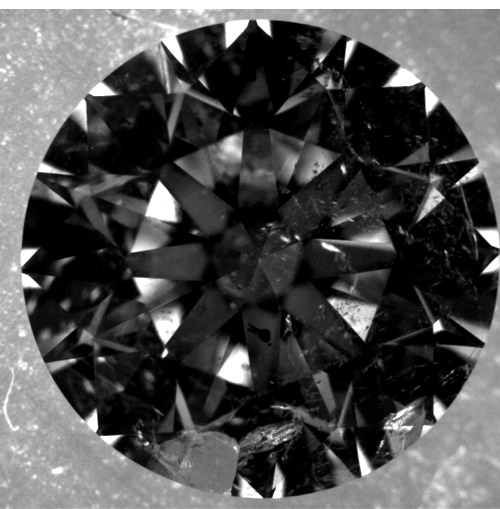
So as mentioned above I1's can make for nice earrings, pendants, etc. especially if you're not looking to drop the bigger bucks that are usually spend on engagement ring qualities. I should add however that I1's are in fact purchased by some for engagement rings but consumers generally stick to the SI grade and higher when it comes to engagement rings.
Next comes I2 or Imperfect to the 2nd degree.
I2 clarity diamonds will generally be so included that they impact transparency and optical properties within
diamond as the inclusions are so large they must pass through these large imperfections thus making the
diamond hazy or cloudy looking because the sheer amount or size of the imperfections. Here is what we
typically see in I2 clarity.
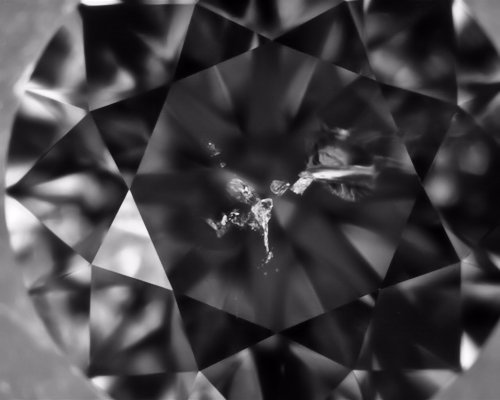
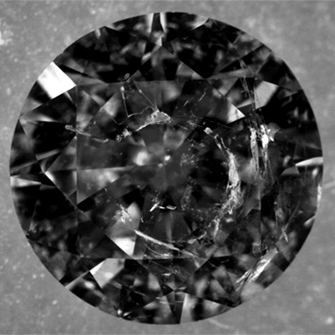
Once in a while we'll run into I2's where the inclusions aren't... well ... so bad. This next example does have an I2 feather but it runs perpendicular to the crown/table and is tougher to visibly see unlike the 2 examples above.
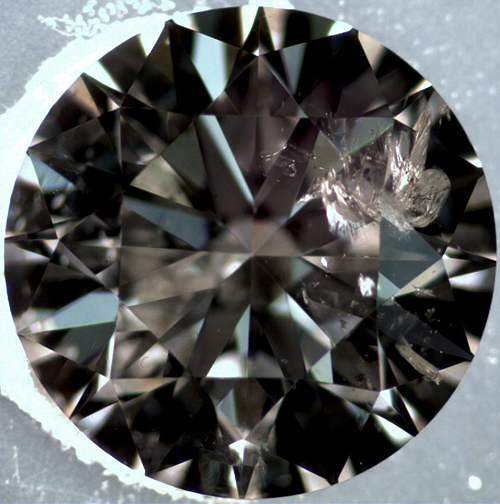
Next comes the last of the clarity grades. Imperfect to the 3rd degree. These were the diamonds being
considered for industrial use but believe it or not are still considered "gem quality" diamonds.
Diamonds are either industrial quality or gem quality. Industrial quality diamonds are those which are used on
concrete saws (ie. saws that cut through concrete are diamond tipped), the old diamond tipped record needles,
diamond saws, etc. Another interesting fact is that 80% of the world's minded diamonds are in fact
industrial grade.
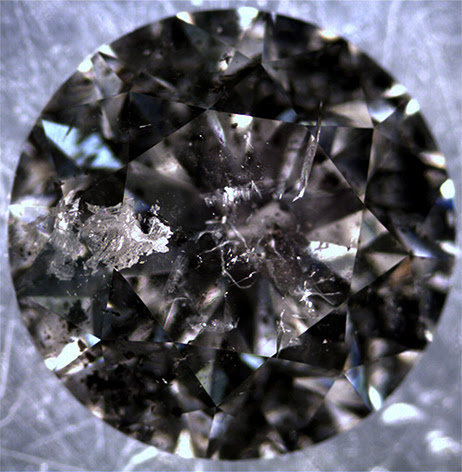
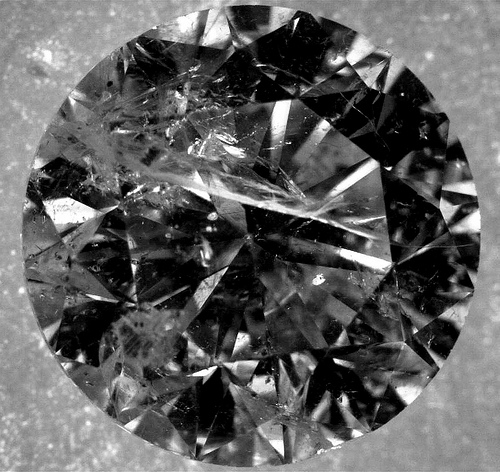
That's it for our tutorial on "Diamond Clarity".
Now lets take a look at Clarity Enhanced Diamonds.
